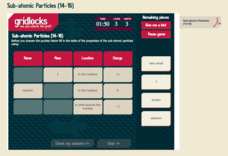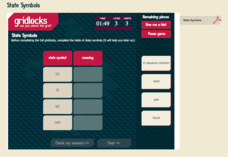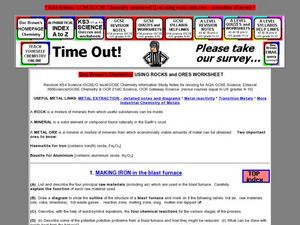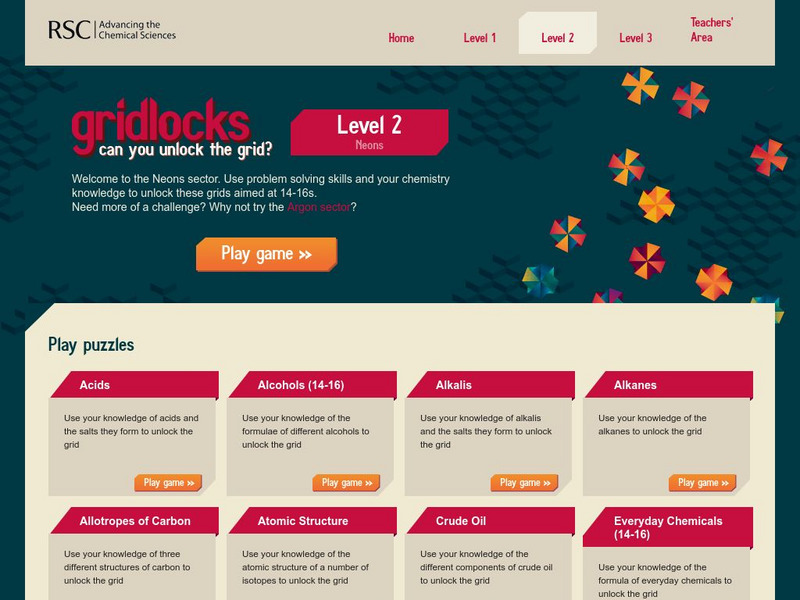Royal Society of Chemistry
The Blast Furnace
The largest chemical reactors are blast furnaces, used to make iron from ore. Scholars explore reactants by first matching each one to its purpose and formula. Then, a series of three gridlock puzzles reinforce the content while...
Curated OER
The Blast Furnace
The eight slides here progress through the stages of the extraction of iron from its ore. They include the reasons for the process, method overview, and reactions. A slide show produced by students, it is a good example of correct...
Creative Chemistry
The Blast Furnace
In this chemical reactions learning exercise, students practice writing chemical formulas, word equations, and symbol equations. They also identify the types of reactions. This learning exercise has seven problems to solve.
Curated OER
Forest Forensics
Students explore forests. In this "forest forensic" instructional activity students divide into groups and go through the stations using their clues to solve the questions.
Curated OER
Metals
In this chemistry worksheet, students use the clues at the bottom of the sheet to complete the crossword puzzle on metals. There are 21 clues to solve on the sheet.
Royal Society of Chemistry
Units of Volume
Did you know in the UK a quart is smaller than in America? This explains why a standard unit of measure is necessary for volume. Young scientists learn the similarities and differences between five different units used to measure volume....
Royal Society of Chemistry
Moles Equations (14-16)
In chemistry, the mole is a unit of measurement, much like a millimeter or liter. After learning about moles, scholars learn various equations relating to mass, volume, and concentration. They review each of these equations in a few...
Royal Society of Chemistry
Forensic Tests
Flame tests determine if there is a specific metal in a chemical compound. Young forensic scientists review their understanding of flame tests and hydroxide precipitates by solving puzzles. The timed review encourages mastery.
Royal Society of Chemistry
Sub-Atomic Particles (14-16)
In 1897, J.J. Thomson discovered the electron, the first subatomic particle proven to exist. Scholars review their understanding of electrons, protons, and neutrons as they work through the puzzles. Each puzzle connects two or three...
Royal Society of Chemistry
State Symbols
When water is a solvent in a chemical equation, we consider it an aqueous solution. Scholars match the name of four states of matter to their proper symbol in a chemical equation. Four puzzles provide repetition to help pupils remember...
Royal Society of Chemistry
Types of Bonding
A covalent bond yells at an ionic bond, "Didn't anyone teach you to share?" Four matching puzzles allow pupils to review covalent, ionic, and metallic bonding. They apply logic and problem solving to complete gridlocks including the...
Curated OER
Using Rocks and Ores Worksheet
For this chemistry worksheet, students answer 15 short answer questions about rocks and ores. They explore write balanced chemical reactions from word equations given.
Curated OER
Reacting Masses Problems
In this reactions worksheet, student determine the products of a reaction, balance an equation, and calculate the number of moles in an experiment. This worksheet has 4 problems to solve.
Curated OER
Moles
In this moles worksheet, students calculate molar ratios, moles, and mass of different molecules. This worksheet has 10 word problems.
Curated OER
Stoichiometry
In this stoichiometry worksheet, students determine the molar ratio for chemical equations. Students calculate moles and grams for reactions. This worksheet has 10 problems to solve.
Royal Society of Chemistry
Royal Society of Chemistry: Gridlocks: Level 2
A collection of grid puzzles that cover a wide variety of topics in intermediate high school chemistry. These are excellent for topic review and reinforcement. The puzzles can be played online and also downloaded as worksheets. Answers...















